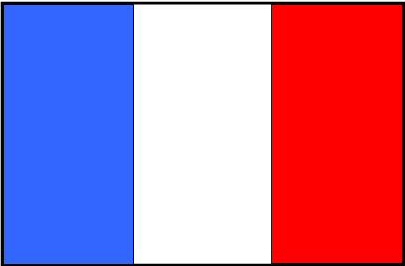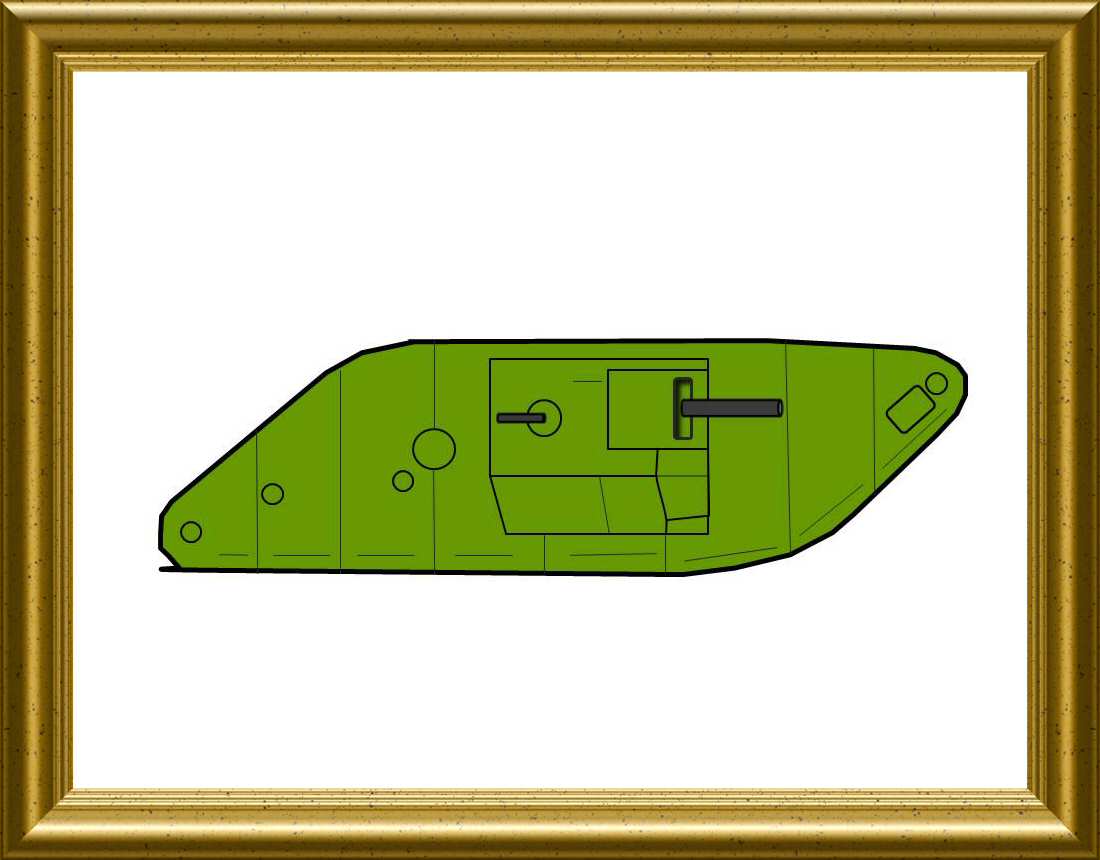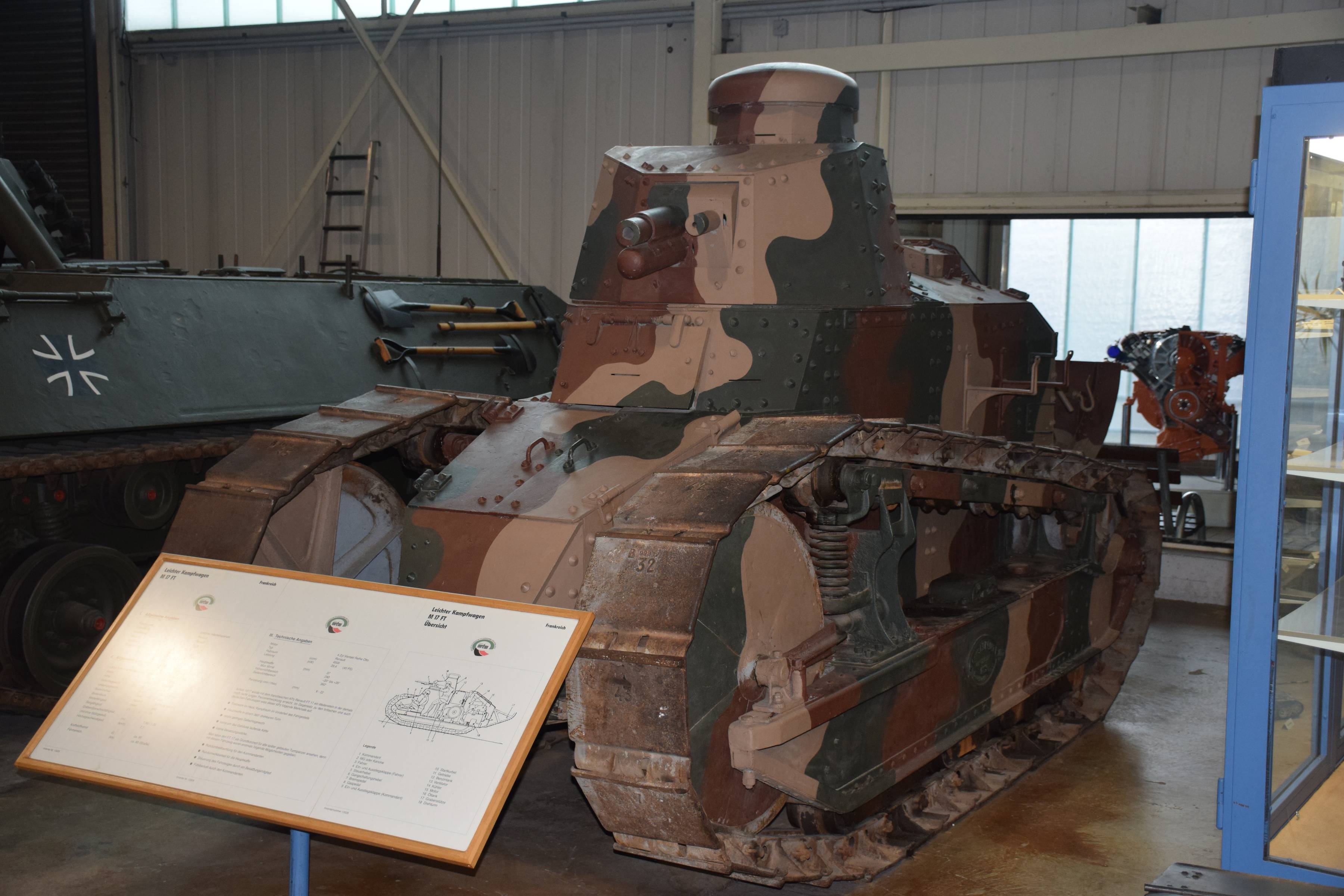|
Historic context :
As soon as in December 1915, at the start of his project consisting in providing the French Armies battle tanks that the Colonel Estienne, the 'Father of the French Tanks' got in touch with Louis Renault, renowned industrial and automobile technique famous designer in order to convince him to participate this adventure. This latter declined, arguing his design department and plants were already fully booked with the war effort, pushing the Colonel to ally with the French heavy industry major Schneider with whom he will design the very first French heavy tank Schneider CA. But while the manufacturing of this weapon was taking place, the Colonel Estienne had the opportunity to meet again with Louis Renault in July 1916, and the pleasure to hear the businessman will to participate actively to the project (on which it seems he had continued to work personally since the first encounter).
The two men designed a new weapon based on a completely different tactical approach from the one that guided the engagement style of the heavy Schneider CA and Saint Chamond tanks, substituting the use of these impressive but clumsy mastodonts by the use of a greater number of much smaller and agile tanks. This weight diminution was particularity sponsored by Louis Renault who fixed to 7 tons the limit not to be exceeded to guarantee this maneuverability and a sufficient mechanical reliability.
The Colonel Estienne had to use a lot of tenacity to convince the French Army with this concept, so that the first order was only given in April 1917, followed by a second one in June for a total number of 3530 light tanks. As a conserquence to the success of the first battle experiences in 1918, the order was increased to a total of 7820 light tanks. 84 of themwere already built before the end of 1917, but it is mostly in 1918 that the deliveries went to a higher rate, to reach 2697 light tanks produced before the November 11 armistice. The Renault light tank career continued in the French Army as well as numerous other ones (including USA) until the eve of WW2.
This 'Renault FT', that was not called 'Renault FT17' berfore the end of WW1 is still considered nowadays as the very first modern tank in the world, since the concepts it introduced remain in place nowadays, with the turret, the front room for the driver, the rear position of the engine, the design of the tracks and their gearing. Very early in the conception phase, Estienne and Renault wanted to arm the tank turret with either a machine gun or a gun. As a consequence, about 2/3 of the tanks produced received a 8mm Hotchkiss machine gun, while the remaining 1/3 was equipped with a 'canon Puteaux de 37mm SA 18' ('SA' for 'Semi-Automatique').
This weapon was an evolution of the 'Canon de 37 mm Mle 1917' that was equipping both aircrafts and automobiles and was itself an evolution of the famous '37 mm Mle 1916 TRP infantry gun' designed by the same Puteaux arsenal. The adaptation of a semi-automatic vertical sliding block breech mechanism alloed the automatic ejection of the cartridge, giving to the gun a nice practical fire rate of 10 rounds per minute. Although its low range and small projectiles made it about harmless against steel shieldings and heavy entrenchments, it was powerful enough against machine guns nests and infantry positions. After WW1, it was also installed on Renault R-35 and Hotchkiss H-35 tanks, Peugeot armoured cars and several types of Polish armoured vehicles.
|
Technical data :
- Complete description : 37 mm Semi Automatic M 1918 light tank gun
- Design year : 1918
- Calibre : 37.00 mm
- Weight in firing position : 110 kg
- Weight for transportation : N/A
- Tube length in calibres : 21.00
- Grooves : 0 unknown
- Projectile weight : 500 g (obus de rupture Mle 1892 m.24) - 555 g (obus explosif Mle 1916) - 455 g (obus ogival plein Mle 1916)
- Initial speed : 388 m/s (anti-armour shell Mle 1892 m.24) - 367 m/s (high explosive shell Mle 1916) - 402 m/s (ogival solid body shell Mle 1916)
- Fire rate : 10 rounds / min (theoretically 15 rounds / minute)
- Range : 2500 m (effective : 400 m)
- Elevation range : -20 to +35 degrees
- Direction range : 360 degrees total range (turret rotation)
|


